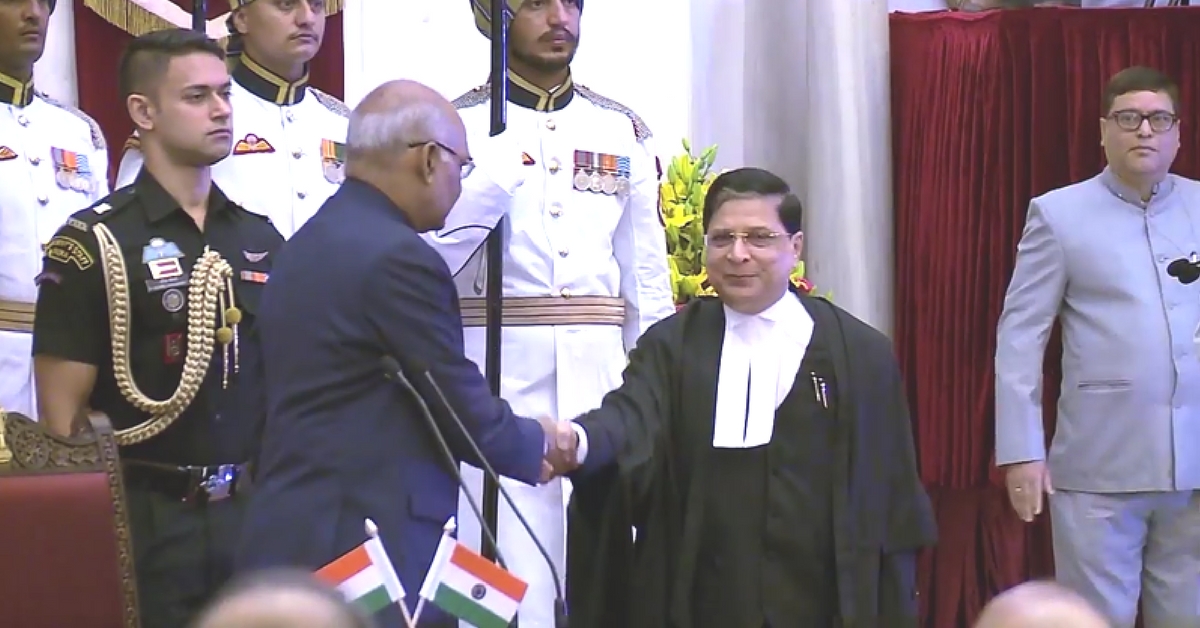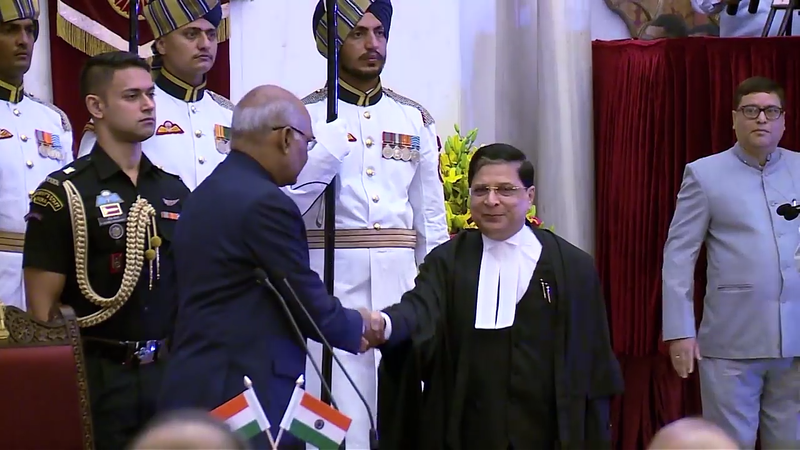Explained: How The Chief Justice of India Can Be Impeached
71 lawmakers from the opposition submitted a notice to the Rajya Sabha Chairman Venkaiah Naidu seeking the impeachment of Chief Justice Dipak Misra.

When four senior judges of the Supreme Court came out in protest earlier this year against the selective allocation of sensitive cases by the Chief Justice of India to particular benches, it was the surest sign that the institution of the judiciary is undergoing a crisis.
Today, matters were taken to a whole another level when seven opposition parties submitted a notice to Rajya Sabha Chairman and Vice President Venkaiah Naidu seeking the impeachment of the Chief Justice of India (CJI), Dipak Misra.
This is unprecedented. For the first time in Independent India’s history, the opposition parties have moved an impeachment motion against the CJI.
Reports state that 71 Rajya Sabha lawmakers have signed the petition seeking an impeachment. The document lists five allegations of “misbehaviour” against Chief Justice Dipak Misra.
Under the Constitution, the number required for the motion to be entertained is 50 members.
Latest reports indicate that the Vice President is currently examining the motion, seeking legal opinions on the subject. The impeachment procedure is laid down in the Constitution, besides the Judges (Inquiry) Act, 1968 and Judges (Inquiry) Rules, 1969.

Here’s how it can happen –
According to Article 124(4) of the Constitution: “A Judge of the Supreme Court shall not be removed from his office except by an order of the President passed after an address by each House of Parliament supported by a majority of the total membership of that House and by a majority of not less than two-thirds of the members of that House present and voting has been presented to the President in the same session for such removal on the ground of proved misbehaviour incapacity.”
Also Read: Time For Reform? The Recent Crisis in The Judiciary Has Lessons For Us All
The process to impeach a sitting CJI lists five steps:
1) Either 100 MPs from the Lok Sabha or 50 MPs from the Rajya Sabha can issue a notice or a motion seeking the start of impeachment proceedings, and either House can move it.
2) The Speaker of the Lok Sabha/Chairman of the Rajya Sabha can either accept or reject the motion. Once admitted, the Speaker or Chairman of either House will constitute a three-member committee comprising a senior judge of the Supreme Court, a High Court judge and an eminent lawyer/judge to probe the allegations. This committee will then proceed to investigate these allegations.
3) If the three-member committee believes that the charges listed in the motion merit the intervention of Parliament, it is taken up for discussion in the House where the matter was introduced. For the motion to pass, it requires a special two-thirds majority of that House present and voting.
4) Once the motion is passed in that particular House, it is taken up for discussion by the other House, which again requires a two-thirds majority for passage.
5) Once the motion is passed by both Houses with a special majority, it is sent to the President. The President then orders the removal of the judge.
(Edited By Vinayak Hegde)
Like this story? Or have something to share? Write to us: [email protected], or connect with us on Facebook and Twitter.
NEW: Click here to get positive news on WhatsApp!
If you found our stories insightful, informative, or even just enjoyable, we invite you to consider making a voluntary payment to support the work we do at The Better India. Your contribution helps us continue producing quality content that educates, inspires, and drives positive change.
Choose one of the payment options below for your contribution-
By paying for the stories you value, you directly contribute to sustaining our efforts focused on making a difference in the world. Together, let’s ensure that impactful stories continue to be told and shared, enriching lives and communities alike.
Thank you for your support. Here are some frequently asked questions you might find helpful to know why you are contributing?


This story made me
-
97
-
121
-
89
-
167











